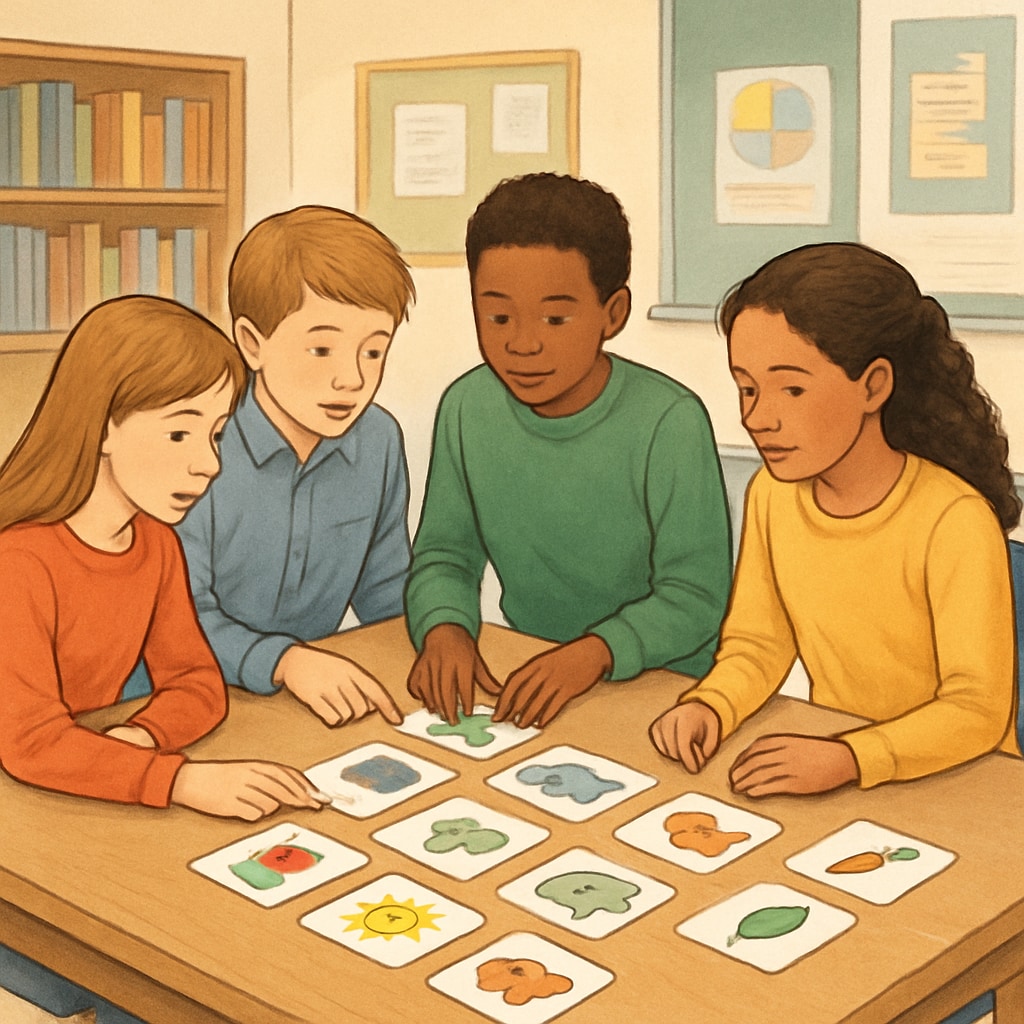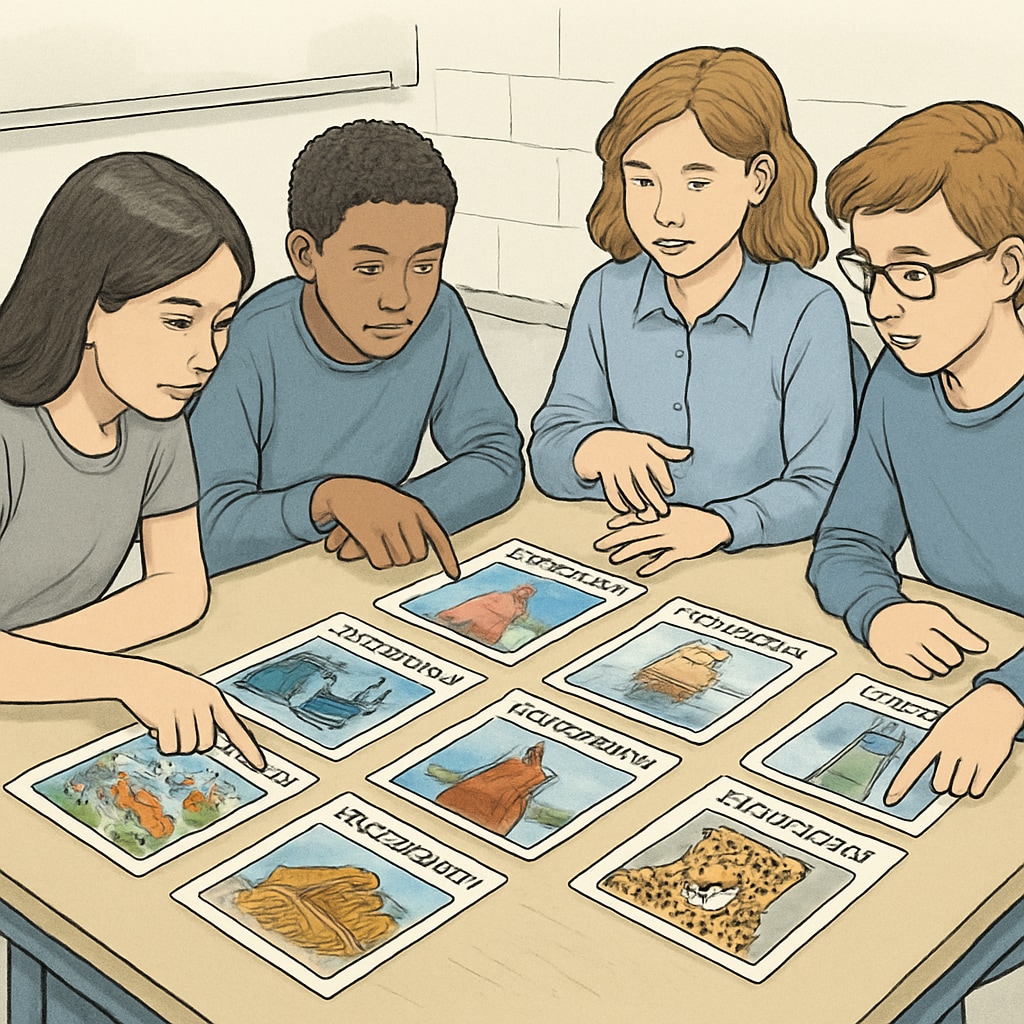Zoom and ReZoom teaching activities are innovative tools designed to enhance engagement in K12 classrooms. These activities not only develop students’ observational skills and logical thinking but also encourage teamwork and creative problem-solving. However, managing resources like the correct answer sequence for these activities can sometimes be challenging. This article explores the educational value of Zoom/ReZoom activities, provides a practical implementation guide, and offers strategies for overcoming resource-related challenges in the classroom.
What Are Zoom and ReZoom Activities?
Zoom and ReZoom are interactive storytelling activities based on two picture books—Zoom and ReZoom—by Istvan Banyai. In these activities, students are given pages from the books, which contain zoomed-in or zoomed-out illustrations. The goal is to arrange the images in the correct order, revealing a cohesive narrative as the group pieces together the sequence.
The activities are particularly effective in promoting critical thinking and collaboration. Students must analyze visual clues, communicate their observations, and work collectively to achieve the correct order. This makes Zoom/ReZoom an excellent fit for classrooms aiming to foster teamwork and analytical skills.

Why Are Zoom/ReZoom Activities Valuable in K12 Education?
Zoom/ReZoom activities bring a wealth of benefits to students of all ages. Here are some of the key advantages:
- Enhances Observation Skills: Students must carefully examine details in each image to determine its place in the sequence.
- Boosts Logical Thinking: The activity challenges students to identify patterns and relationships between images.
- Encourages Teamwork: Collaborative problem-solving is essential, as students rely on each other’s insights to complete the task.
- Improves Communication: Participants must articulate their reasoning and negotiate with peers to reach a consensus.
- Engages Diverse Learners: The visual nature of the activity appeals to students with different learning styles, especially visual and kinesthetic learners.
For educators, these activities also provide a break from traditional teaching methods, creating an engaging and dynamic classroom environment.
How to Implement Zoom/ReZoom Activities in the Classroom
While Zoom/ReZoom activities are straightforward to organize, a few tips can ensure their successful implementation:
- Prepare the Materials: Print and laminate pages from the Zoom and ReZoom books to create durable, reusable sets. Ensure the pages are shuffled to add a challenge.
- Divide Students into Groups: Depending on class size, split students into smaller teams, each working on their own set of images.
- Set Clear Instructions: Explain the goal of the activity and provide guidelines on how to collaborate effectively.
- Facilitate and Observe: Act as a facilitator, offering hints or guidance if groups struggle, but avoid solving the puzzle for them.
- Debrief the Activity: Once completed, discuss the process with the class. Highlight successful teamwork strategies and encourage reflection on lessons learned.
Additionally, educators can modify the activity’s difficulty by adjusting group sizes or introducing timed challenges to keep students engaged and motivated.

Managing Resources and Overcoming Common Challenges
One of the most significant hurdles educators face when implementing Zoom/ReZoom activities is the potential loss or misplacement of materials, particularly the correct answer sequence. Here are some strategies to address this issue:
- Digital Backups: Maintain digital copies of the book pages and answer sequences on a secure cloud storage platform for easy access and reprinting if needed.
- Label and Organize: Clearly label each image with sequential numbers on the back to simplify cleanup and storage without revealing the sequence during the activity.
- Create a Resource Bank: Collaborate with other educators to share Zoom/ReZoom materials and best practices. This can be especially helpful for new teachers or those with limited resources.
- Use Online Communities: Platforms like Reddit’s Teaching Community or Teachers Pay Teachers often provide valuable tips and resources for managing classroom activities.
By proactively managing resources, educators can ensure the longevity and effectiveness of these activities, even in the face of logistical challenges.
Conclusion
Zoom and ReZoom teaching activities are powerful tools for enhancing engagement and fostering essential skills in K12 classrooms. By promoting observation, logical thinking, and teamwork, they offer a dynamic alternative to traditional teaching methods. With proper preparation and resource management, educators can overcome challenges like lost materials and ensure these activities remain a valuable part of their teaching toolkit. As a result, students not only enjoy the process but also leave the classroom with improved critical thinking and collaboration skills.
For further reading on collaborative classroom activities, visit Collaborative Learning on Wikipedia or Education Principles on Britannica.


